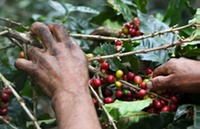
The cells of our body need a constant supply of energy in order to be able to function normally. This fuel is provided by the so called macronutrients; carbohydrates, fat and protein. Carbohydrates are a very important source of energy for the human body. In some parts of the world, more than 80% of the energy consumed comes from carbohydrates. Public health authorities today recommend that 45 - 65% of our energy consumption should be provided by carbohydrates.
Before I go further, let´s clarify a few issues. How do we classify carbohydrates? Which carbohydrates are defined as sugars?
Carbohydrates are compounds that contain carbon, hydrogen and oxygen. They are generally classified as monosaccharides, disaccharides and polyscaccharadies, Saccharide means sugar, mono means one, di means two and poly means many. A monosaccharide contains one sugar molecule, a disaccharide contains two sugar molecules and a polysaccharide contains many sugar molecules.
Monoscaccharides and disaccharides are commonly termed sugars or simple carbohydrates, while polysaccharides are usually termed complex carbohydrates or starches. Cellulose and other fibers are also carbohydrates, but they do not provide energy as the body does not possess the enzymes necessary to digest them. Cellulose is commonly found in starchy foods, and although it does not provide energy, it contains vitamins, minerals and other nutrients. This is one of the reasons fiber is considered a healthy food choise. Sugar, however, provides only energy and does not contain vitamins, mineral or fiber.
The three monosaccharides found in food are glucose, fructose and galactose. Fructose is the one most commonly used as a food additive. It is the sugar molecule that has the sweetest taste. High-fructose corn-syrup is commonly added to foods when they are processed.
Three disaccharides are frequently used in food as well; sucrose, lactose and maltose. Sucrose is the typical, white table sugar and contains one molecule of glucose and one molecule of fructose. Sucrose is added to many processed foods.
Glucose and fructose may indeed work very differently for the human body. Glucose is metabolized by every organ in the body. It is our cells most important source of energy. If we don´t get glucose through our diet, our body makes it by a process called gluconeogenesis. Fructose is different as it can only be metabolized in the liver. Depending on our body´s need for energy, fructose will be metabolized to glucose, although this has been debated by some. However, if our energy needs are already met, which is often the case, fructose will be metabolized to fat.
By eating modern diet, rich in added fructose, we may indeed be overloading our liver. Much of the fructose delivered to the liver will be metabolized to fat. Through different complex mechanisms, over consumption of sugar, primarily fructose, may contribute to obesity and the metabolic syndrome as well as many other modern day diseases like high blood pressure, cardiovascular disease, cancer and Alzheimer´s disease.
Carbohydrates are classified in different ways. They are often divided into two categories; sugars and starches. Sugars are also known as simple sugars or simple carbohydrates, and starches are referred to as complex carbohydrates. The widespread processing of carbohydrate-containing foods has given rise to some new terms. The term highly "processed"refers to foods that are primarily sugar or products made from grains that have been highly refined and sweetened. Examples of such foods are beverages and sugared cereals. In contrast, whole grains and foods made from them are referred to as minimally processed, fiber containing, or quality carbohydrates.




